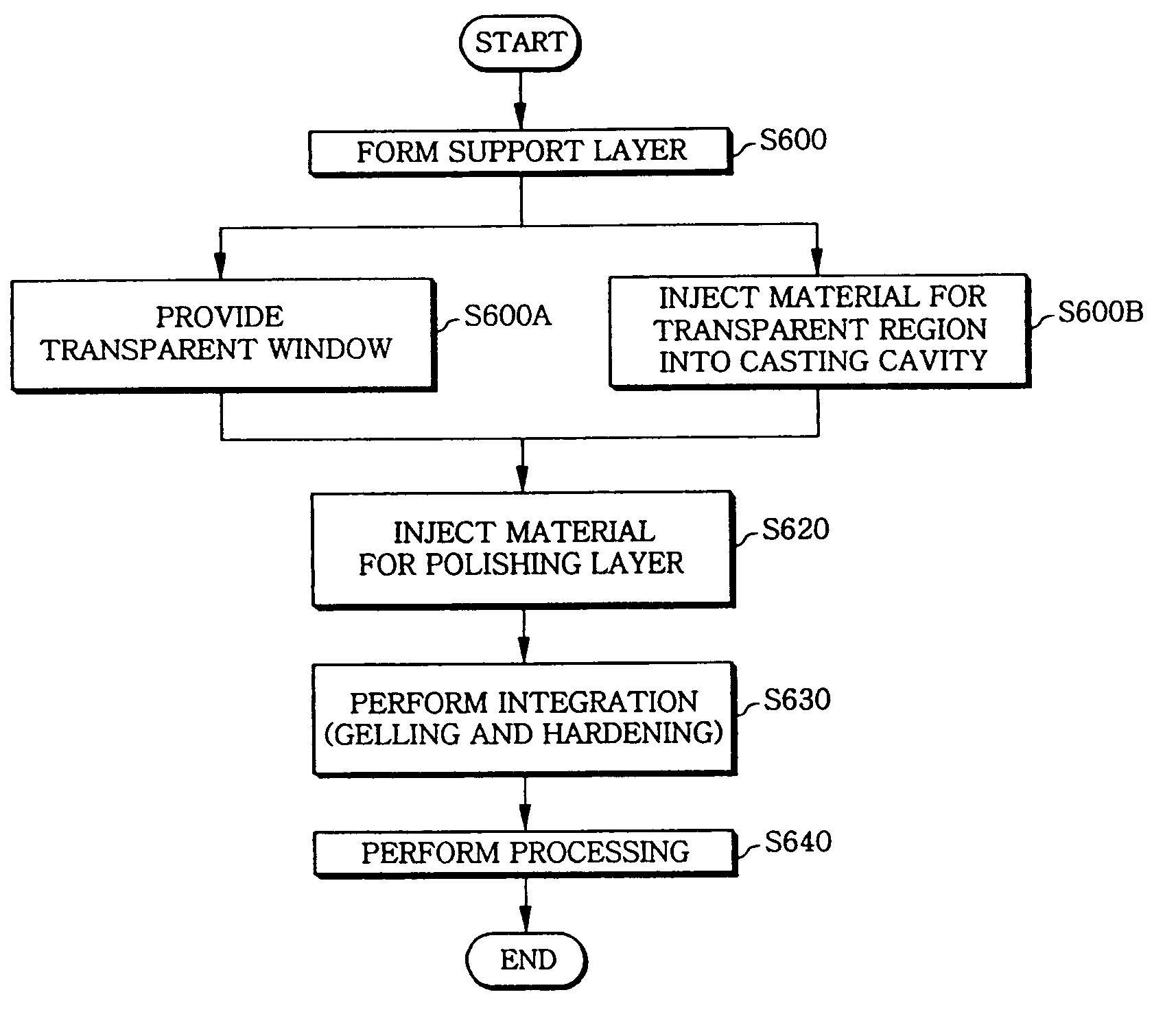Integral polishing pad and manufacturing method thereof
a polishing pad and integrated technology, applied in the field of polishing pads, can solve the problems of reducing the planarization efficiency, affecting the manufacturing process, and affecting the quality of the polishing pad, and achieve the effect of improving the planarization efficiency
- Summary
- Abstract
- Description
- Claims
- Application Information
AI Technical Summary
Benefits of technology
Problems solved by technology
Method used
Image
Examples
experimental example 1
[0062] A reaction was commenced by mixing 100 g of a polyether-based isocyanate prepolymer (having an NCO content of 16%) with 100 g of polypropylene glycol at room temperature. Under the condition that a low viscosity is maintained, the mixed liquid was poured into a mold maintained at 80±1° C. Then, the resulting product was taken out and post cured for 20 hours in an oven maintained at 100° C. The cure product was cut to have a predetermined size, thereby forming a support layer. A sheet having a thickness of 1 mm was manufactured in the same manner as the support layer and cut to have a size of 20×50 mm, thereby manufacturing a transparent window.
[0063] The manufactured support layer was laid in a mold having a predetermined size, the transparent window was put on the surface of the support layer, and the temperature of the mold was set to 50° C.
[0064] 100 g of a polyether-based isocyanate prepolymer (having an NCO content of 11%), 23.3 g of mineral oil (hereinafter, referred ...
experimental example 2
[0065] An integral polishing pad was manufactured in the same manner as used in Experimental Example 1, with the exception that 46 g of KF-70 was used and EXPANCEL was not used.
experimental example 3
[0066] A polishing layer was manufactured in the same manner as used in Experimental Example 1. A predetermined portion of the polishing layer was punched in a size of 20×50 mm to form an empty space and then laid in a mold having a predetermined size. The temperature of the mold was set to 50C.
[0067] A urethane reaction material manufactured by the same method as the transparent window was manufactured in Experimental Example 1 was injected into the empty space in the polishing layer within the mold. Thereafter, as in Experimental Example 1, a urethane reaction material for a support layer was injected into the mold. Next, gelling was performed for 30 minutes, and thereafter, curing was performed for 20 hours at 100° C. in an oven. The cured product was taken out of the mold and cut, thereby forming an integral polishing pad.
[0068] In an integral polishing pad according to the present invention, since an elastic support layer is integrated with a polishing layer, planarization ef...
PUM
| Property | Measurement | Unit |
|---|---|---|
| weight percent | aaaaa | aaaaa |
| diameter | aaaaa | aaaaa |
| diameter | aaaaa | aaaaa |
Abstract
Description
Claims
Application Information
 Login to View More
Login to View More - R&D
- Intellectual Property
- Life Sciences
- Materials
- Tech Scout
- Unparalleled Data Quality
- Higher Quality Content
- 60% Fewer Hallucinations
Browse by: Latest US Patents, China's latest patents, Technical Efficacy Thesaurus, Application Domain, Technology Topic, Popular Technical Reports.
© 2025 PatSnap. All rights reserved.Legal|Privacy policy|Modern Slavery Act Transparency Statement|Sitemap|About US| Contact US: help@patsnap.com



